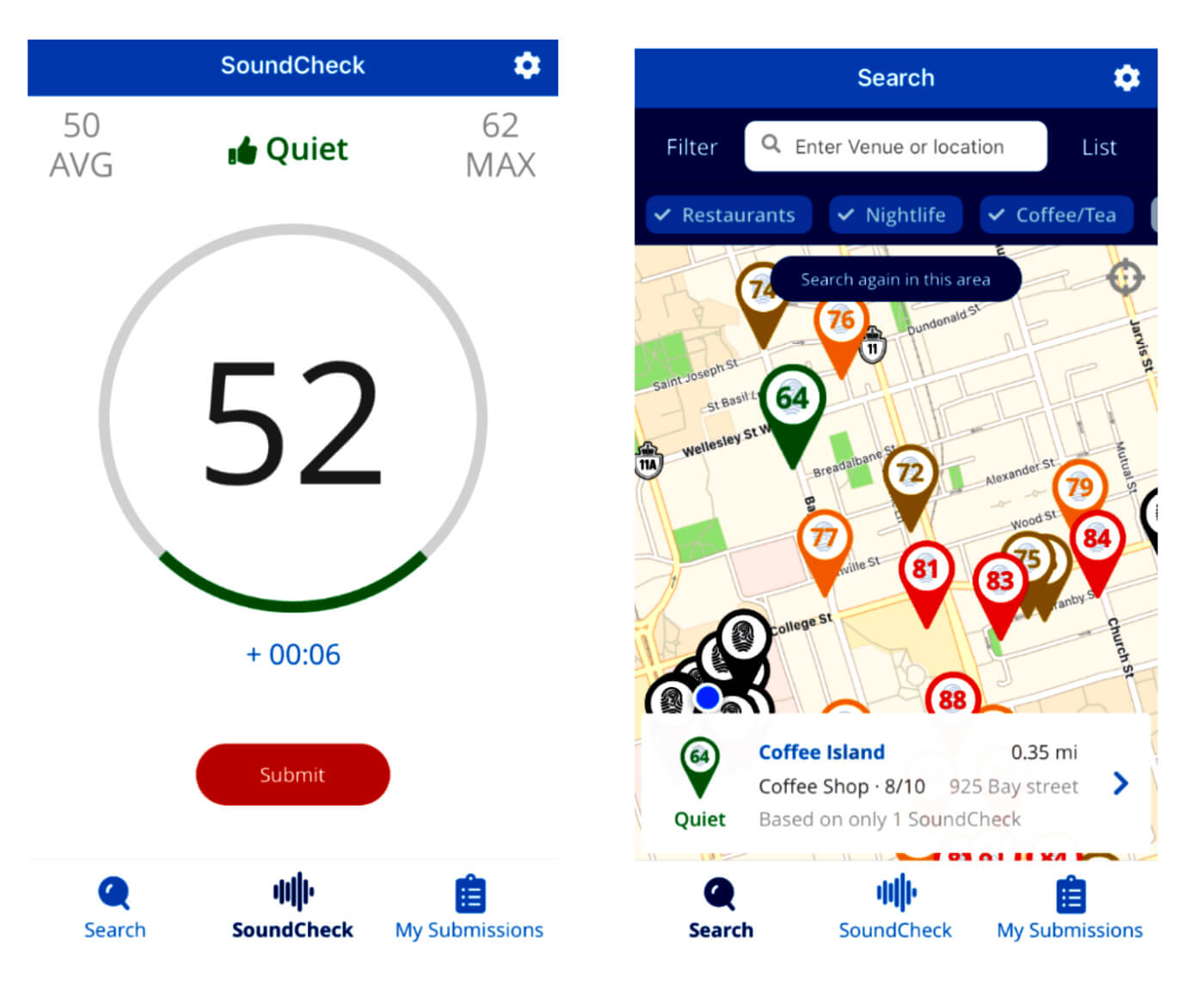"Is there any chance the music could be turned down a bit”, I asked our server politely on a rare evening out with my husband. We had spent the previous half-hour shouting at each other, only to have the other person mishear half of what was said. It was a hip Toronto restaurant and the server looked at me like I was most uncool. “Sorry”, she shrugged, “that’s just the level we set the music at here”.
If you think that restaurants seem to be louder than ever, it is not just your imagination. The popularity of high-ceilings, industrial surfaces and open kitchens, while pleasing to the eye, actually exacerbate the issue. With hard, reflective surfaces, the sound has nowhere to go. The problem then snowballs when diners are forced to increase their vocal effort to overcome the noise (plus any music), further amplifying noise levels.
I am not alone in loathing noisy restaurants. Having to scream just to have a few words heard over the din brings out the curmudgeon in many of us, particularly those who already have a hearing loss to contend with. Thankfully, an app called SoundPrint is here to help.
SoundPrint (available for iOS and Android) is an app designed to help users discover quieter venues in their area. Using the sound level meters embedded within our smartphones, the app crowdsources its data by allowing users to submit noise readings from venues around the world. To date, approximately 95,000 readings have been submitted globally. Indeed, the restaurant my husband and I visited has a user-submitted reading of 85dBA, a level at which conversation becomes very difficult and extended exposure can cause hearing loss.

Within SoundPrint, users can use the ‘Search’ function to find readings for a specific venue or get a bird’s eye view of all available readings in a given area. Results can then be filtered according to user preferences. With ‘SoundCheck’, users can sample and submit noise level readings in real-time. Users can also view their submission history (‘My Submissions’). Though readings from the app are approximations only, samples from the app were found to be relatively accurate when measured against Type 1 professional sound level meters (+/- 1.2 decibels 90% of the time). A decibel guide within the app (‘Settings’) helps users to gauge the significance of noise level readings.
“Having to scream just to have a few words heard over the din brings out the curmudgeon in many of us”
One drawback of the app is that many venues currently only have a single user submission (or else haven’t been measured at all). It is also worth noting that, while both iOS and Android users can view readings that have been submitted to the app, currently only iOS users can submit readings due to the variability in hardware and software across Android devices.
Beyond identifying restaurants that might be too noisy for some patrons, SoundPrint is taking things a step further by encouraging users to use the data from the app to start a dialogue with restaurant managers. The SoundPrint website (www.soundprint.co) includes a list of tips for venue managers on how to improve the acoustic experience for patrons.




